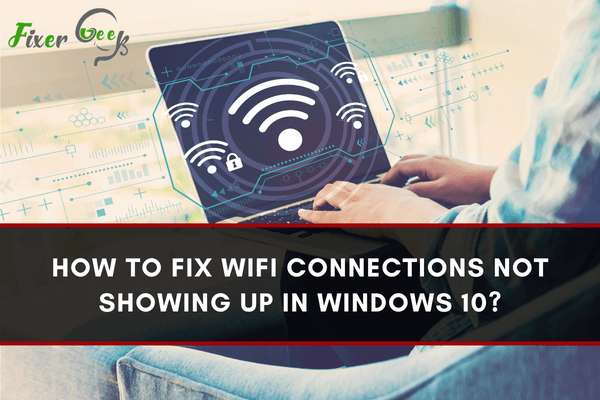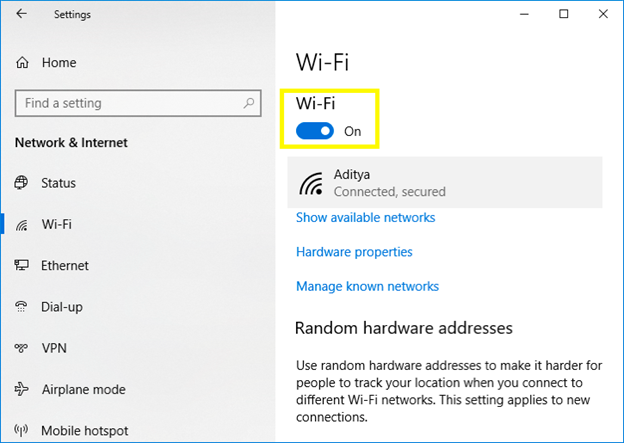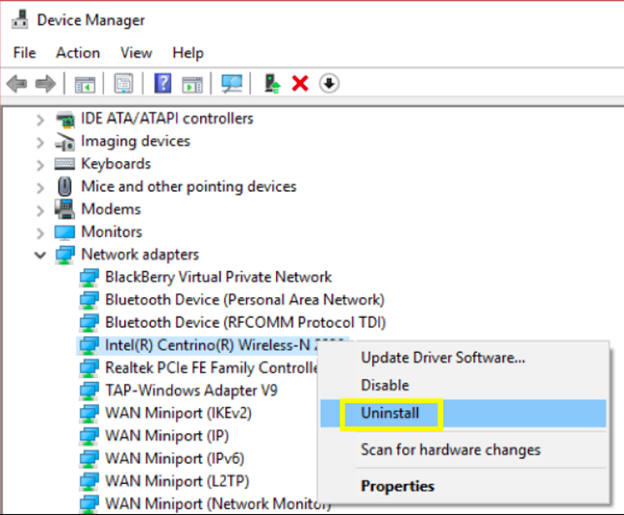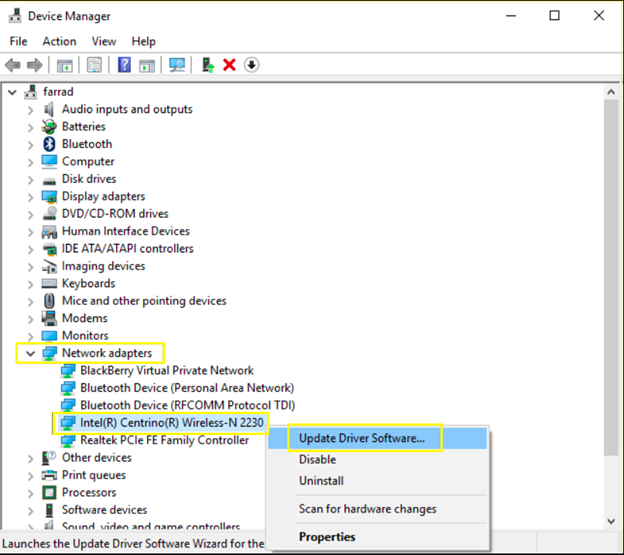How To Fix WiFi Connections Not Showing Up In Windows 10?
- Why Does This Happen?
- Fix #1: Check the Physical WiFi Switch
- Fix #2: Enable the Network Driver
- Fix #3:Restart the Router
- Fix #4: Run the Troubleshooter
- Fix #5: Uninstall the Driver
- Fix #6: Update the Driver
- Fix #7: See if Other Devices are Interfering
- Final Words
- Summary: Fix WiFi connections not showing up in Windows 10
Is your Windows 10 unable to display saved WiFi connections after upgrading? This is a very common issue in Windows 10. I've experienced the same issue on my laptop when the latest version of Windows 10 was installed. My wireless connection was missing from Wi-Fi settings in Windows 10 and I was not able to connect again until I found a fix. If you are facing a similar issue and wondering what could cause this fault, read below to know the possible solution.

There is nothing more frustrating than your computer being unable to connect to the WiFi. The first thing to do? Calm down, then try to assess where the problem lies. You can check whether it's because of your device or your WiFi signal.
You can do this by checking whether your other devices can connect to the desired WiFi network. If they can, then the trouble is with your PC. If not, the problem might be in the connection itself. Troubleshoot the problem using our guide below.
Why Does This Happen?
There are several reasons why your WiFi connection won't show up. It could be in the hardware, such as an outdated WiFi driver, or a mistake in the WiFi configuration. However, the fixes for any of these issues are easy to learn and remember for the next time you encounter them. Here are some of them:
Fix #1: Check the Physical WiFi Switch
Before all else, see whether the switch that enables WiFi on your device is set to on. In some laptops, this is a small switch near the keyboard base. For desktops, it's typically by pressing the Function key (Fn)+ one of the function keys 2 to 5. Once that is done, you can proceed with the following steps from here on out.
Fix #2: Enable the Network Driver
- Look for the network icon in your notifications, then right-click to choose "Open Network and Internet Settings."
- Select "Change adapter options" under the "Change network settings."
- Right-click on your WiFi adapter's icon, and select Enable.
 At this point, check whether this solves the problem. If not, proceed to the next steps.
At this point, check whether this solves the problem. If not, proceed to the next steps. - Open the Settings app by using the shortcut key Windows key + I.
- Select Network & Internet, then choose WiFi.
- Toggle the WiFi to enable it if it wasn't turned on.

Fix #3:Restart the Router
The next easiest fix is to turn your WiFi router off then on again. This essentially reboots your router by reassigning a new temporary IP address to it.
- Turn off your router using the manual switch. Then, unplug its power source as well.
- Wait for up to a few minutes.
- Turn on the router again, and check if the problem is resolved.
Fix #4: Run the Troubleshooter
- Open the Settings app by using the shortcut key Windows key + I and choose Updates and Security.
- Below Troubleshoot, click on Internet Connection, then Run Troubleshooter.
- Follow the instructions shown and see if the WiFi connection appears.
Fix #5: Uninstall the Driver
- Press the Windows Key + R, then type "devmgmt.msc."
- Press Enter to open the Device Manager.
- Click on Network Adapters and look for your network adapter. Note the name of your adaptor.
- Right-click on your network adapter's icon, then choose Uninstall.

- Restart your computer, and the default drivers will be automatically installed.
If this does not solve the problem, then it means you will need to proceed and update the driver from the computer manufacturer's website. Download the updated driver, then proceed to Fix #7.
Fix #6: Update the Driver
Follow the steps for uninstalling the driver until step 3 then proceed to these steps:
- Right-click your network adapter icon, then choose Update drivers.
- Choose the option to browse for drivers on your computer, then select "Let me pick from a list of available drivers on my computer."
- Choose the latest drivers, then restart the computer to install the changes.

Fix #7: See if Other Devices are Interfering
The WiFi signal can conflict with other devices such as those that use wireless frequencies. This includes cordless phones and Bluetooth speakers. Turn off all devices that may be interfering, and unplug them as well.
Final Words
The instructions on these fixes are for computers on Windows 10, but they are also applicable to those using Windows 7 and 8. Keep them in mind, or save this article, so you know what to do when your WiFi connection is not showing again.
Summary: Fix WiFi connections not showing up in Windows 10
- Connect your computer to the router via an Ethernet cable, and the problem should be gone at this point.
- Update Network Adapter Driver if possible.
- Run Commands after completing each command press enter.
- Release/Renew IP Address.
- Reset winsock catalog back to default using Command Prompt.